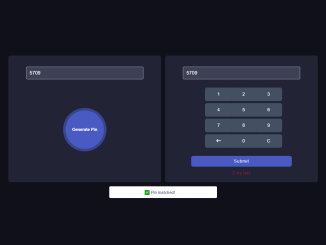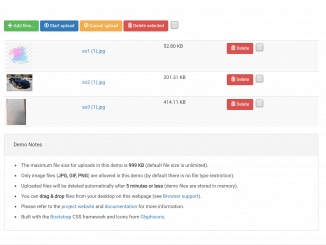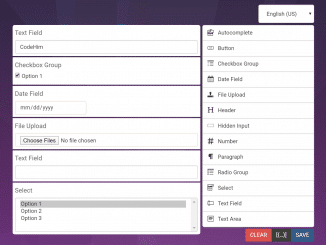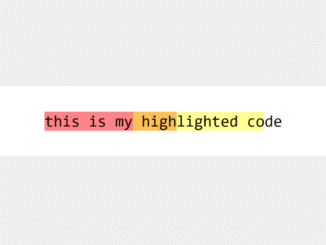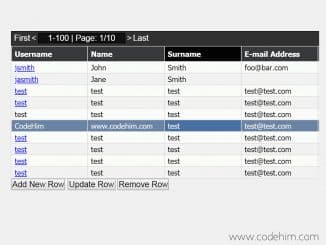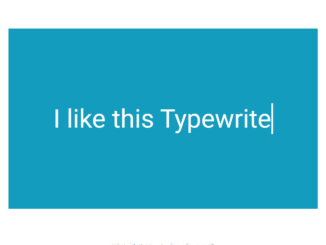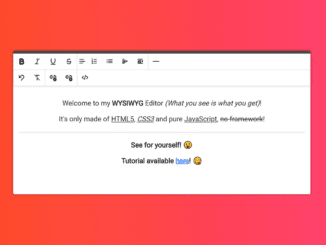
This JavaScript code snippet helps you to create Text-to-Speech functionality on a webpage. It comes with a basic interface with input options for text, voice, pitch, and rate. When you press the “Speak” button, the text you enter is converted to speech using the selected voice, pitch, and rate. The “Stop” button halts speech output. It’s helpful for adding a text-to-speech feature to web applications.
You can use this code to implement text-to-speech functionality on your website. It adds an interactive and engaging feature, making your site more inclusive.
How to Create Text To Speech Functionality Using JavaScript
1. In your HTML file, create a structure for the TTS interface. You can use the following HTML code as a starting point. It includes input fields for text, voice selection, pitch, and rate, along with buttons for speaking and stopping the speech.
<div class="voiceinator">
<h1>The Voiceinator 5000</h1>
<select name="voice" id="voices">
<option value="">Select A Voice</option>
</select>
<label for="rate">Rate:</label>
<input name="rate" type="range" min="0" max="3" value="1" step="0.1" />
<label for="pitch">Pitch:</label>
<input name="pitch" type="range" min="0" max="2" step="0.1" />
<textarea name="text">Hello! I love JavaScript 👍</textarea>
<button id="stop">Stop!</button>
<button id="speak">Speak</button>
</div>
2. Apply the following CSS code to style the TTS interface. This will make it visually appealing and user-friendly. You can further customize the CSS to match your website’s design.
html {
font-size: 10px;
box-sizing: border-box;
}
*,
*:before,
*:after {
box-sizing: inherit;
}
body{
margin: 0;
padding: 0;
font-family: sans-serif;
background-color: #3bc1ac;
display: flex;
min-height: 100vh;
align-items: center;
background-image: radial-gradient(
circle at 100% 150%,
#3bc1ac 24%,
#42d2bb 25%,
#42d2bb 28%,
#3bc1ac 29%,
#3bc1ac 36%,
#42d2bb 36%,
#42d2bb 40%,
transparent 40%,
transparent
),
radial-gradient(
circle at 0 150%,
#3bc1ac 24%,
#42d2bb 25%,
#42d2bb 28%,
#3bc1ac 29%,
#3bc1ac 36%,
#42d2bb 36%,
#42d2bb 40%,
transparent 40%,
transparent
),
radial-gradient(
circle at 50% 100%,
#42d2bb 10%,
#3bc1ac 11%,
#3bc1ac 23%,
#42d2bb 24%,
#42d2bb 30%,
#3bc1ac 31%,
#3bc1ac 43%,
#42d2bb 44%,
#42d2bb 50%,
#3bc1ac 51%,
#3bc1ac 63%,
#42d2bb 64%,
#42d2bb 71%,
transparent 71%,
transparent
),
radial-gradient(
circle at 100% 50%,
#42d2bb 5%,
#3bc1ac 6%,
#3bc1ac 15%,
#42d2bb 16%,
#42d2bb 20%,
#3bc1ac 21%,
#3bc1ac 30%,
#42d2bb 31%,
#42d2bb 35%,
#3bc1ac 36%,
#3bc1ac 45%,
#42d2bb 46%,
#42d2bb 49%,
transparent 50%,
transparent
),
radial-gradient(
circle at 0 50%,
#42d2bb 5%,
#3bc1ac 6%,
#3bc1ac 15%,
#42d2bb 16%,
#42d2bb 20%,
#3bc1ac 21%,
#3bc1ac 30%,
#42d2bb 31%,
#42d2bb 35%,
#3bc1ac 36%,
#3bc1ac 45%,
#42d2bb 46%,
#42d2bb 49%,
transparent 50%,
transparent
) !important;
background-size: 100px 50px !important;
}
.voiceinator {
padding: 2rem;
width: 50rem;
margin: 0 auto;
border-radius: 1rem;
position: relative;
background: white;
overflow: hidden;
z-index: 1;
box-shadow: 0 0 5px 5px rgba(0, 0, 0, 0.1);
}
.voiceinator h1 {
width: calc(100% + 4rem);
margin: -2rem 0 2rem -2rem;
padding: 0.5rem;
background: #ffc600;
border-bottom: 5px solid #f3c010;
text-align: center;
font-size: 5rem;
font-weight: 100;
font-family: "Pacifico", cursive;
text-shadow: 3px 3px 0 #f3c010;
}
.voiceinator input,
.voiceinator button,
.voiceinator select,
.voiceinator textarea {
width: 100%;
display: block;
margin: 10px 0;
padding: 10px;
border: 0;
font-size: 2rem;
background: #f7f7f7;
outline: 0;
}
textarea {
height: 20rem;
}
input[type="select"] {
}
.voiceinator button {
background: #ffc600;
border: 0;
width: 49%;
float: left;
font-family: "Pacifico", cursive;
margin-bottom: 0;
font-size: 2rem;
border-bottom: 5px solid #f3c010;
cursor: pointer;
position: relative;
}
.voiceinator button:active {
top: 2px;
}
.voiceinator button:nth-of-type(1) {
margin-right: 2%;
}
3. Finally, add the following JavaScript code to your project. It sets up the SpeechSynthesis API to handle text-to-speech. It also populates the voice selection dropdown with available voices. You can further customize the code to modify voice options or enhance user interactions.
const msg = new SpeechSynthesisUtterance();
let voices = [];
const voicesDropdown = document.querySelector('[name="voice"]');
const options = document.querySelectorAll('[type="range"], [name="text"]');
const speakButton = document.querySelector("#speak");
const stopButton = document.querySelector("#stop");
msg.text = document.querySelector('[name="text"]').value;
function populateVoices() {
voices = this.getVoices();
voicesDropdown.innerHTML = voices
/*.filter(voice => voice.lang.includes("en"))*/
.map(
voice =>
`<option value="${voice.name}">${voice.name} (${voice.lang})</option>`
)
.join("");
}
function setVoice() {
msg.voice = voices.find(voice => voice.name === this.value);
}
function toggle(startOver = true) {
speechSynthesis.cancel();
if (startOver) {
speechSynthesis.speak(msg);
}
}
function setOption() {
console.log(this.name, this.value);
msg[this.name] = this.value;
toggle();
}
speechSynthesis.addEventListener("voiceschanged", populateVoices);
voicesDropdown.addEventListener("change", setVoice);
options.forEach(option => option.addEventListener("change", setOption));
speakButton.addEventListener("click", toggle);
stopButton.addEventListener("click", () => toggle(false));
That’s all! hopefully, you have successfully created Text-to-Speech feature using JavaScript. If you have any questions or suggestions, feel free to comment below.
Similar Code Snippets:

I code and create web elements for amazing people around the world. I like work with new people. New people new Experiences.
I truly enjoy what I’m doing, which makes me more passionate about web development and coding. I am always ready to do challenging tasks whether it is about creating a custom CMS from scratch or customizing an existing system.


